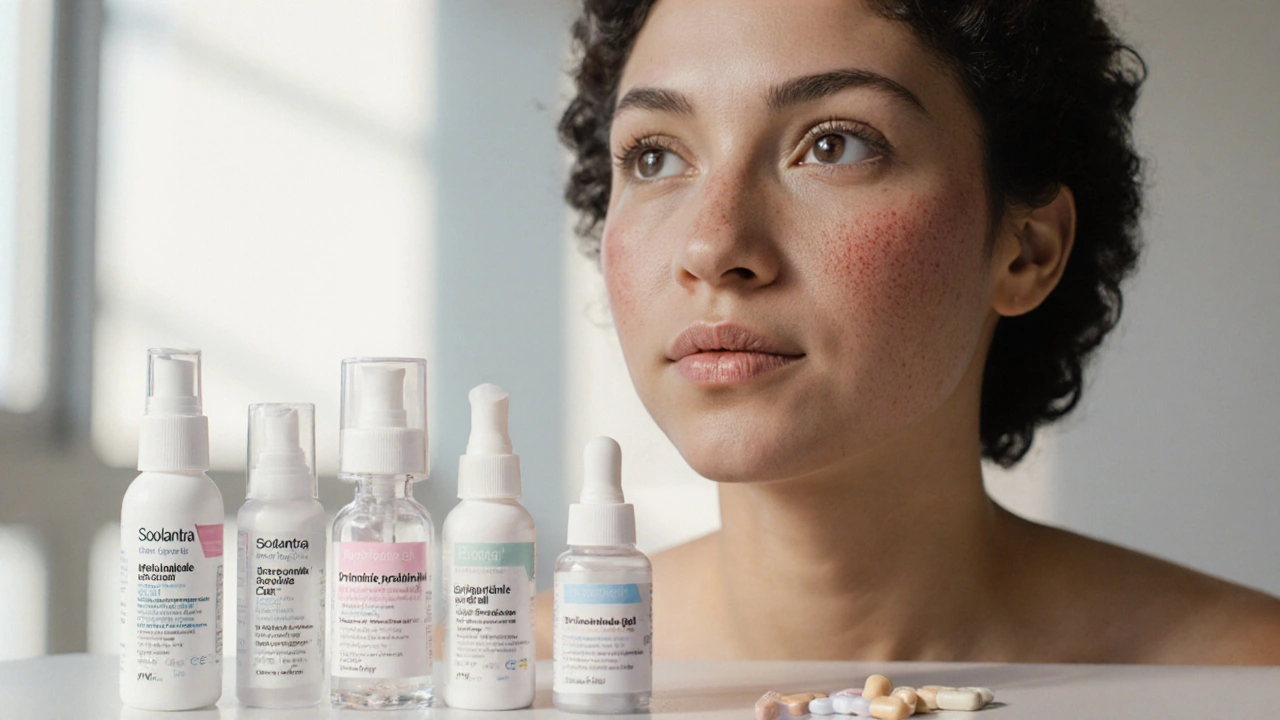When dealing with Rosacea Treatment, a collection of medical and skincare methods designed to reduce facial redness, bumps, and visible blood vessels. Also known as rosacea therapy, it helps people regain confidence by targeting the root causes of flare‑ups.
One of the most trusted Topical Azelaic Acid, a gentle anti‑inflammatory and keratolytic ingredient works by calming redness and smoothing texture without the stinging you might get from harsher acids. Studies show that a 15‑20% azelaic formulation applied twice daily can cut visible erythema by up to 40 % in just a few weeks. Pairing azelaic acid with a light moisturizer reinforces the skin barrier, which is crucial because a compromised barrier often fuels rosacea flare‑ups. If you prefer a prescription route, Metronidazole, a topical antibiotic with anti‑parasitic properties remains a go‑to for many dermatologists. It reduces inflammation by inhibiting the production of inflammatory mediators, and most users notice a calmer complexion within 4‑6 weeks. Both azelaic acid and metronidazole illustrate how rosacea treatment often starts on the surface, tackling visible symptoms before deeper interventions are considered.
When skin‑level solutions aren’t enough, Oral Antibiotics, systemic medications such as doxycycline or minocycline used at low, sub‑antimicrobial doses become the next line of defense. These drugs work by dampening the inflammatory response throughout the body, which can translate into fewer facial breakouts and lasting redness reduction. A typical 12‑week course of low‑dose doxycycline often yields noticeable improvement, and because the dose is lower than that used for infections, side‑effects are minimal. However, oral antibiotics are not a forever fix; they’re best combined with consistent topical care and trigger management. Common triggers—spicy foods, extreme temperatures, alcohol, and stress—can reignite symptoms even after a successful medication regimen, so identifying personal triggers remains a core part of any comprehensive plan. Lifestyle tweaks like using a gentle cleanser, applying sunscreen daily, and avoiding hot showers can sustain the gains achieved with medication.
Beyond creams and pills, procedures such as laser therapy or intense pulsed light (IPL) target enlarged blood vessels directly, offering a non‑drug alternative for stubborn redness. While these options require a professional setting, they illustrate how rosacea treatment spans everything from over‑the‑counter gels to in‑office procedures. Below you’ll find a curated list of articles that dig deeper into each of these approaches, compare products, and share real‑world tips for keeping flare‑ups at bay.

A 2025 guide comparing Soolantra (ivermectin) with top rosacea alternatives, covering efficacy, side effects, cost, and usage tips.
read more